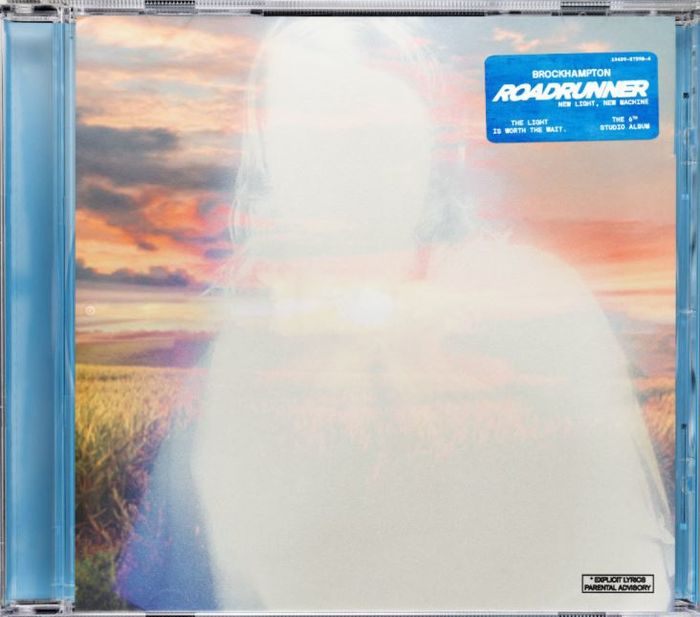Album Review: Taylor Swift – Fearless (Taylor’s Version)
Neve Atkinson reviews Taylor Swift’s latest release: a re-recording of her second studio album from 2008
The year is 2008. I am seven years old. I don’t have a concept of ‘albums’ or ‘artists’, so the realisation that “Love Story” and “Fifteen” are by the same person shakes me to my core. It wouldn’t be until after Red came out in 2012 that I realised exactly who Taylor Swift was, connected the dots between her albums and realised that she had written some of the biggest songs of my childhood. And when 1989 came out in 2014, I came to the conclusion that she was one of the best songwriters working today. My opinion pretty much hasn’t changed since.
As a teenager who had a very powerful ‘not like other girls’ phase, it seems inescapable that Taylor Swift basically raised me. Red was the first album I ever bought, and 1989 is one of the best pop records ever, so it would make sense for me to see Fearless as slightly before my time. Yet that album captures the experience of being a teenage girl like no other record, and so it became central to my adolescence. That’s why, in this time of fear and uncertainty, there’s something deeply comforting about Fearless (Taylor’s Version) being almost exactly the same as the album Swift released in 2008.
And that’s the point. This act of re-recording is in response to the sale of Swift’s old recordings without her permission, an attempt to reclaim the songs that she no longer owns by re-releasing her entire back catalogue under a record deal that means she keeps the rights to her music. Swift has been a vocal advocate for artists’ rights over the last few years, to her financial detriment. She has petitioned streaming services to ensure artists get paid fairly and raised awareness about the fact that record deals often mean they lose the rights to their work. These re-recordings are her attempt to reclaim the narrative, and starting with Fearless was undoubtedly the correct choice. It was the first of her albums to achieve truly astronomical success, her first (of three) Album of the Year wins at the Grammys, and is probably still one of her best projects more than a decade later. Remarkably, Fearless (Taylor’s Version) feels fresh, whether it be her more mature vocals, or the sharper production that highlights the instrumentation; “The Way I Loved You” is a particularly good example of this. There should be something dated about it, but the addition of the ‘From the Vault’ songs (six new tracks that didn’t make it on to the original album) ensures that fans have something fresh to talk about, while still being able to get that hit of nostalgia.
“the restraint shown by Swift demonstrates how simple her intentions are; she’s not here to rewrite her past self, she’s here to recreate”
Are some of the lyrics on this album in need of a refresh? Undoubtedly. “You Belong With Me” single-handedly made me believe that girls who “wear t-shirts” were superior to those who “wear short skirts” (but is still one of the best songs on the album), and I have always harboured a perhaps unfounded distaste for “The Best Day”, but the restraint shown by Swift demonstrates how simple her intentions are; she’s not here to rewrite her past self, she’s here to recreate, maybe brighten in terms of production. These songs are incredibly special to so many, so wouldn’t it be wrong to change them? Fearless (Taylor’s Version) is literally a revival of the ‘old Taylor’ that was proclaimed dead in 2017. And, despite the sometimes juvenile lyricism, there can never be too much romantic imagery on a Taylor Swift album.
You could argue that the addition of six new songs makes Fearless (Taylor’s Version) far too long, at twenty-six tracks. I would agree if the ‘From the Vault’ songs weren’t such vintage Taylor Swift. “We Were Happy” is devastating, and “Bye Bye Baby” is a brilliant album closer. I’m usually a twelve-track purist, but I think that this album is worth the nearly two-hour listen; at the very least it’s a perfect soundtrack to one of those long lockdown walks.
There is something wonderful about thirty-one-year-old Taylor Swift singing songs written by her eighteen-year-old self, especially “Fifteen”, which is about not knowing everything as a teenager. She tells us that it’s okay to like the same stuff we did when we were kids on an album almost identical to the one we did love over a decade ago. There are subtle differences, but some moments genuinely had me believing I was listening to the 2008 recording. Fearless (Taylor’s Version) might be from another era, and I doubt that we’re about to see a resurgence of pop-country (although I wouldn’t complain), but the nostalgia of this album is what makes it special. And the fact that the new songs fit right in is the icing on the cake. I can’t wait until we hear a more mature Taylor revisit more of her classics. If Fearless (Taylor’s Version) is anything to go by, I won’t be disappointed.
 Comment / Plastic pubs: the problem with Cambridge alehouses 5 January 2026
Comment / Plastic pubs: the problem with Cambridge alehouses 5 January 2026 News / Uni-linked firms rank among Cambridgeshire’s largest7 January 2026
News / Uni-linked firms rank among Cambridgeshire’s largest7 January 2026 News / New movement ‘Cambridge is Chopped’ launched to fight against hate crime7 January 2026
News / New movement ‘Cambridge is Chopped’ launched to fight against hate crime7 January 2026 News / SU stops offering student discounts8 January 2026
News / SU stops offering student discounts8 January 2026 News / Cambridge businesses concerned infrastructure delays will hurt growth5 January 2026
News / Cambridge businesses concerned infrastructure delays will hurt growth5 January 2026









